-
|
05 June 2022
|Posteado en : Interview
Indigenous peoples occupy 22% of the world's territory and their role is essential for the maintenance of cultural diversity and biodiversity, according to UNESCO.
The nature managed by these communities is declining less rapidly than in other areas, as they work to protect the environment over the long term through sustainable use of biodiversity management and governance. However, they are the most affected by the effects of climate change.
The lands they manage account for 28% of the carbon stored in forests globally. Annually, they sequester an amount of CO2 equivalent, on average, to 30% of Brazil, Colombia, Mexico and Peru’s 2030 targets. These countries store 28% of the world’s carbon, but account for only 5.1% of global greenhouse gas emissions.
The latest report of the Intergovernmental Panel on Climate Change (IPCC) warns of the loss of ecosystems and the decrease in food production and access to food, which has led to an increase in malnutrition and has seriously affected the economy of these indigenous communities.
Climate policies have traditionally ignored the ancestral knowledge and wisdom of indigenous peoples, which is why 141 governments committed at COP26 in Glasgow to recognise the rights of these communities and their lands as a fundamental element in ending deforestation by 2030. Now Peru is launching an Indigenous Peoples’ Platform to address climate change.
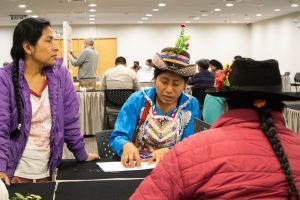
It thus becomes a pioneer country in the recognition of indigenous knowledge and practices that contribute to the comprehensive management of climate change, as established in the Paris Agreement.
FIIAPP supports this Platform
We spoke with Teresa Aguilar and Álvaro Ovejas, Project Technicians in the European programme Euroclima+, co-led by the FIIAPP, which has supported the formation of this Platform. They tell us about the challenges in the implementation of this proposal and the great benefits it brings. This is the first time that the Peruvian Ministries of Culture and Environment have come together with the country’s indigenous peoples.
How was the Platform of Indigenous Peoples of Peru born to confront climate change?
Teresa: This Platform was born out of the indigenous people’s own demand and brings together the seven registered and legalised indigenous organisations in the country. It is a milestone on the Latin American continent because it brings together indigenous peoples of different casuistry, ethnicities and origins.
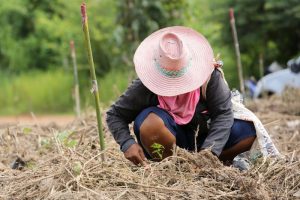
Álvaro: The Platform gives indigenous peoples a voice in climate governance bodies, such as the National Commission. In addition, Peru is a ratifier of ILO Convention 169, which establishes the obligation to consult indigenous peoples in all political and legal measures that could directly affect them.
What have been the main challenges in setting up this platform?
Teresa: The first challenge has been linguistic. The different indigenous peoples cannot understand each other, because not everyone speaks Spanish, only the political leaders. They speak five native languages such as Quechua, Aymara, Shipibo and Awajún. We have also faced the territorial challenge. It is not easy to move around in a country like Peru, and these are people who do not have access to digitalisation either.
How does climate change affect indigenous women the most?
Teresa: The indigenous population, because of their origin, is a rural population and their livelihoods depend on natural resources. Therefore, climate change directly affects their economic activity.
The impact of climate change is aggravated and is more disproportionate for women, who are already discriminated against and vulnerable. They are socially responsible for food and household health and, living in rural environments, their livelihoods are based on fishing, livestock, agriculture or agroforestry management. The impact of climate change degrades their economy, and we are already seeing climate migration in the face of environmental disasters caused by climate change.
What has been the role of the European programme Euroclima and the FIIAPP in the construction of the Platform?
Álvaro: Euroclima has been involved from the beginning of this process. It started with the prior consultation with indigenous peoples on the Framework Law on Climate Change, which agreed, among other provisions, on the creation of this Platform. It was during the development of the Framework Law on Climate Change that direct collaboration between Euroclima and the Peruvian Ministry of Environment began.
On the one hand, we have supported the development of dialogues between the Peruvian Ministry of Environment and national organisations. And on the other hand, we have supported the process of creating the entire legal, regulatory and institutional framework that gives the Platform its place.
Why are indigenous peoples known as guardians of diversity?
Álvaro: The way of life of indigenous peoples is not only very rural, but does not require the same infrastructure that is used in cities. Their routine is much more adapted to the environment.
Teresa: I think that the guardians of nature are undoubtedly the people who have originally grown up and lived in it. It is their ecosystem and they know it perfectly, it is what is called ancestral knowledge.
Is this initiative in Peru a reference for other Latin American countries?
Teresa: Peru is now a country that others look up to. There are countries that could replicate it because the Peruvian experience is scalable. All of Latin America has an indigenous population, but political will is needed. It all depends on the nature of the country and how this indigenous figure is received by governments.
There is also talk of indigenous associations at the regional level, such as those in the Amazon. The Amazon Basin has great value in terms of forests and the environment; it is the lungs of the planet and touches several countries. Therefore, we are no longer talking about a national platform, but a transnational one. When you talk to regional indigenous associations, their dream is to have a platform that unites them at the regional level.
-
|
15 February 2018
|Posteado en : Reportage
Cities are becoming key hubs from which to fight climate change. In Latin America, Euroclima+ supports mitigation policies to reduce emissions
When pollution levels increase, public transport in Paris is free. And only “clean” vehicles can enter the city. In Brussels and Copenhagen, priority is given to bicycles. Or the speed limit is reduced, as in Madrid. While London, Oslo and Stockholm use tolls to restrict traffic.
Other measures taken by the transport sector to reduce urban air pollution include prizes for green cars and controlling traffic flow and parking, encouraging car sharing and public transport. Urban air pollution is one of the most visible effects of climate change in cities around the world.
Outside of Europe, Tokyo monitors pollution in real time, with indexes that can be viewed online. Checks on the street, fines and lists of offenders are some of the other measures taken in one of the most populated cities in the world.
And the majority of the world population lives in cities. Making the adoption of an urban perspective on climate change necessary, as it is estimated that 70% of the population will be urban in 2050. Uses associated with the network of cities produce more than 70% of CO2 emissions.
Climate change and health
An article reflects on whether we are aware of what urban air pollution means. On whether we are aware that poor air quality affects our health. And on whether we are aware that it causes thousands of premature deaths a year. And it is backed up by data: 1,032,833 deaths per year in China, 621,138 in India, 54,507 in Ukraine, 32,668 in Turkey, 26,241 in Brazil, 26,160 in Germany and 16,798 in Mexico.
Euroclima+, the European Union-financed programme to tackle climate change in Latin America, supports the development of mitigation policies directly related to the reduction of greenhouse gases and other emissions.
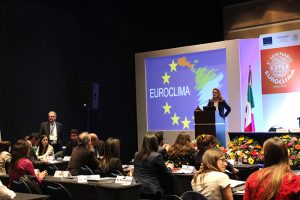
Euroclima+ meeting in Chile In addition, other specific plans with this objective are being developed in the industrial and transport sectors. They are necessary because a growing population means that current production and consumption patterns are running up against limited resources. A calculation of the ecological footprint shows that if no action is taken by 2030 we will need the equivalent of two planet Earths to cover our needs.
The programme is present in 18 Latin American countries and works in accordance with the United Nations Convention on Climate Change and according to the needs of a region that hosts some of those expanding cities.
Climate change in the Sustainable Development Goals
The climate governance component of Euroclima+ is being led by FIIAPP. Another of the programme’s tasks is to evaluate these climate policies, which will allow the associated actions to be redefined or redesigned in accordance with the framework agreements or compliance with the Sustainable Development Goals (SDG). These are the 17 goals several world leaders established in 2015 for a better world in 2030. And which, in summary, aim to “end poverty, fight inequality and stop climate change”.
Among them, number 11 refers to “sustainable cities” with a section on “environmental impacts” and number 13 focuses on action against climate change.–– But, how are things progressing with them?
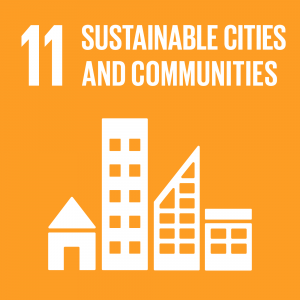
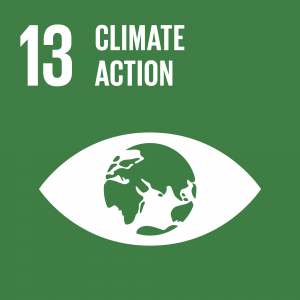
The European Union is studying progress towards these goals. In its latest study (Sustainable development in the European Union, 2017) it determined that the concentration of population and industry continues to be a risk for air quality. Despite the advances, the levels of air pollution continue to be above those recommended by the World Health Organization (WHO).
However, as part of its strategy for 2020, the EU set the goal of reducing greenhouse gas emissions by 20%, compared to 1990. The goal for 2015 has already been exceeded, with a reduction of 22%.
The cities are also commited
In this context, cities are aware they need to be involved. And they advocated this at the last UN Climate Summit (COP23), held in Bonn in November 2017, by calling for more tools to combat climate change.
Specifically, the reduction of greenhouse gas emissions was addressed with the ultimate aim of slowing down global warming. The objective remains that terrestrial temperatures do not increase more than 2 ºC by 2050. To achieve this, emissions must be reduced by 80%.
Euroclima+ also attended the meeting, where it met with ministers from several countries in the region to follow up on the objectives they have already committed to under the Paris Agreement (COP21) and to strengthen the dialogue on climate policies.
Many of the cities that met in Bonn also belong to the C40 network, which brings together more than 90 cities to combat the impacts of climate change by working collaboratively. The main objectives include “reducing greenhouse gases and increasing the health and well-being of citizens”.
This network alone represents “more than 650 million people and a quarter of the world economy”, making cities a priority when it comes to addressing this problem.
An example of this commitment is reflected in the short documentary released on the internet on the work of 6 cities: Bogota, Cape Town, New York, Paris, Portland and Seoul.
In reality, the next step is for us, as individuals, to also be aware that these measures are not intended to make our lives more difficult. On the contrary, they will allow us to live in the future.
The trick is to change some habits, with small gestures, however insignificant they may seem. More than 7,000 million small gestures can defeat climate change.






